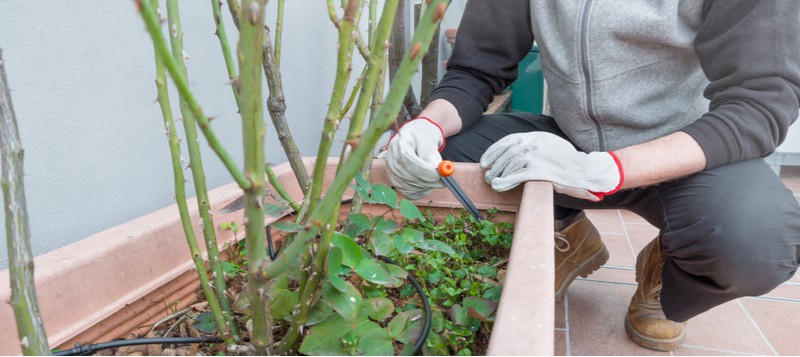Last updated on April 4th, 2022
Our site is reader supported, this means we may earn a small commission from Amazon and other affiliates when you buy through links on our site.
If you are interested in growing roses but don’t have the garden space for them, rest assured that you can grow patio roses in containers with equal success. Why the patio? It is often the go-to space for container-grown roses because most people find it the perfect place to give their roses a semi-permanent home and enjoy them during their lifespan.
Roses are not only aesthetically pleasing, but they give off a pleasant fragrance that fills your patio area with a sweet aroma, perfect for socialising. What’s more, these roses often provide the showiest of blooms, making them ideal for any place where you sit and take in their beauty.
So, how do roses thrive in containers? They have slender, long roots that do well if they can find the right moisture levels and nutrients in the soil. The containers you use should be narrow and deep, ideal for accommodating such characteristics.
Best types of roses for pots
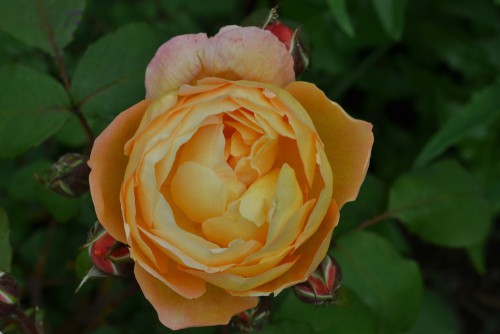
While there are many types of roses out there, a container-grown patio rose should be a miniature rose. Miniature roses don’t require a lot of maintenance, and of course, they are smaller. The best types include:
- Miniature Rose Nice Day
- Patio Rose Sweet Dream
- Rose Laura Ford
See some of our recommended roses for containers in this round-up guide
All in all, they can grow upwards of 45-60cm high if the container is around 60-90cm deep. If you decide on a long deep trough-type container, suitable for more than one plant, keep the roses 45cm apart, to accommodate their bushy shape as they mature and to allow good airflow. If you plant them too closely together, it can cut off the air circulation as they age and lead to diseases such as mildew and black spot.
Caring for Patio Roses
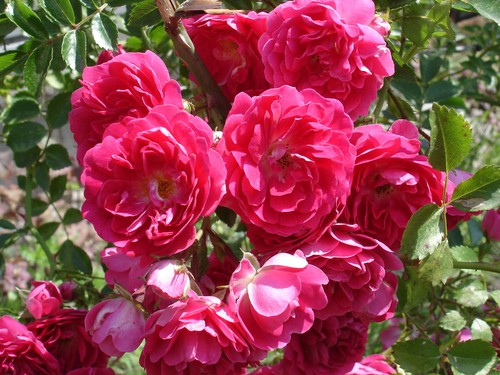
You want to start with the right type of rose and an appropriately sized container. The material you select for your container is important because the size of the container compared to the size of a fully grown patio rose bush necessitates a heavier material to prevent the pot from toppling over, especially if it is located in an exposed area.
Find compost specifically for roses too. Multi-purpose compost will work well but mix in some John Innes Potting Compost to help add weight and help with moisture retention. Make sure that you put the container in its final home before you fill it with compost otherwise it might be too heavy to move easily. The location should allow your roses to spend at least half the day in direct sunlight and part of the day in the shade too to prevent the plant from drying out as well.
Pruning roses in containers
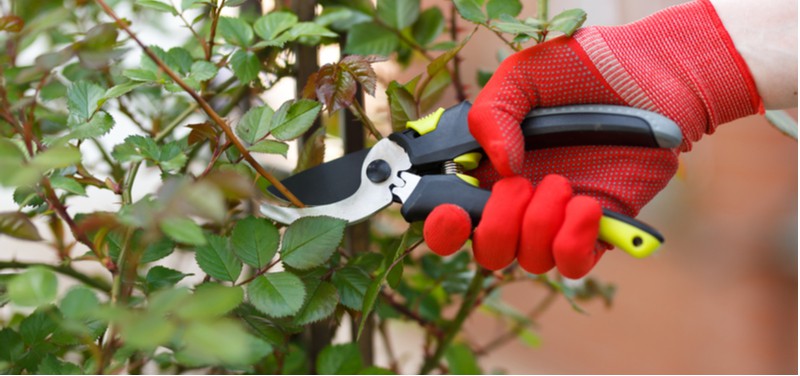
Pruning helps maintain a healthy and happy rose bush and does a lot to control the shape. To prune a patio rose, you should remove any diseased or old wood so that new roses can get access to the limited nutrients. You should also prune in order to help the overall shape of the rose bush. You can remove any shoots that are detrimental to the overall shape, shoots that are weak, or shoots that you know are on their way to interfering with the overall look or the overall shape within a few more seasons.
When to prune
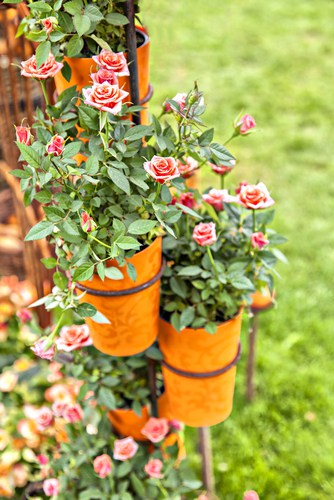
You want to prune when the rose bush is dormant, something that happens twice per year, weather permitting. If you have a mild winter, then prune in November. If, instead, you have a cold and frosty winter, prune in March or April.
When it comes time to prune out different branches, always cut above an outward-facing bud on the stem. Always cut at a slant so that the plant doesn’t drown if there is rain. Having sharp gardening tools will help you to make a clean cut roughly 1cm above the bud.
In addition to pruning, you can also deadhead, removing the dead flower buds after summer is over.
Dealing with suckers
If you see suckers, coming out of the base of your plant, remove them immediately. These will not look like the other shoots. They are usually light green, very thorny, with seven leaflets, and the best way to remove them as to pull them and twist them off rather than cut them off.
Feeding and Watering patio roses
Feeding
 Recommended rose feed – Available on Amazon.co.uk
Recommended rose feed – Available on Amazon.co.uk
You always want to give your rose bush enough food and water so that it is strong enough to fight off diseases. When you prune them, give them extra rose fertiliser. In the summer after the first set of flowers has come and gone, give them another dose of fertiliser. However, after August, do not feed your roses because the extra fertiliser could promote new, soft growth and if the weather gets unexpectedly cold it will damage the new foliage.
Watering
Water your patio roses in the summer every other day and for the rest of the season test the soil for dryness, and water accordingly. Making sure you don’t overwater or underwater your plant will go a long way towards keeping it healthy. Remember that container plants tend to dry out slightly faster than those grown in the ground and require a little more attention.
Image credits – Shutterstock.com

